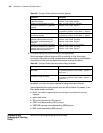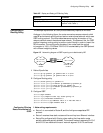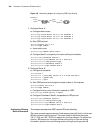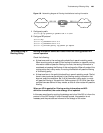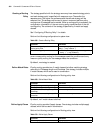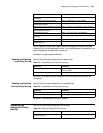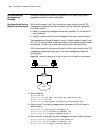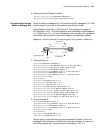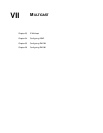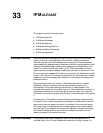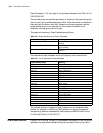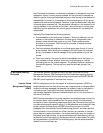
494 CHAPTER 32: CONFIGURING IP POLICY ROUTING
IP Policy Routing
Configuration
Example
This section describes two different configurations for IP policy routing with a
suggested procedure for each configuration.
Configure Policy Routing
Based on Source Address
Define a policy named “aaa” that includes two nodes, through which all TCP
messages are transferred from serial interface 0 and the others are transferred
from serial interface 1.
■ Node 10 indicates that messages matched with access list 102 will be sent to
serial interface 0.
■ Node 20 indicates that all the other messages will be sent to serial interface 1.
The messages from Ethernet 0 attempt to match if-match clauses of nodes 10 and
20, in turn. If nodes in permit mode are matched, the corresponding apply clauses
are executed. If nodes in deny modes are matched, exit from policy routing.
LAN A is connected with the Internet through the 3Com router, requiring that TCP
messages be transmitted through path 1 and other messages be transmitted
through path 2.
Figure 160 Networking diagram of configuring policy routing based on source address
1 Define access list:
[Router]acl 101
[Router-acl-101]rule deny tcp source any destination any
[Router-acl-101]acl 102
[Router-acl-102]rule permit tcp source any destination any
2 Define a node 10, indicating messages matching access list 102 will be sent to
serial interface 1
[Router-acl-101]route-policy aaa permit 10
[Router-route-policy]if-match ip address 102
[Router-route-policy]apply interface serial 1
3 Define node 20, indicating all the other messages will be sent to serial interface 0
[Router-route-policy]route-policy aaa permit 20
[Router-route-policy]if-match ip address 101
[Router-route-policy]apply interface serial 0
LAN A 10.110.0.0/16
Internet
Quidway
EO
S1
S0



